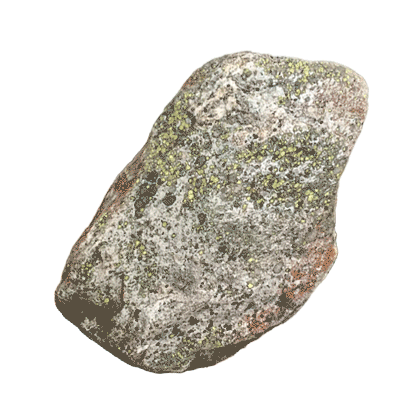PRIMITIVE TOOLS OF SUPERORGANISM EARTH - 2022
Shown at the Sarabande Group Show - 'Uhrformen' - With artists, Marta Klara and Leo Carlton

This series of work, titled 'Primitive tools of Super-organism Earth’ are inspired by Neolithic agricultural implements, taken from a period that triggered the biological curation of the Earth through the cultural practice of Farming.
Each tool harbours a type of extremophile organism. The ancient tools and super resilient biologies of the organisms make light of techno-centric modernity. The Organisms that live on these artefacts are also ancient technology, and have a capacity to reach far beyond human biological limits. These organisms may outlast us, and through our primitive tools, expand the biological reach of the Earth.
These works were shown as part of Uhrformen', a group show curated by Sarabande residents Marta Klara, Louis Alderson-Bythell (LAB) and Sarabande Alumnus Leo Carlton. Uhrformen explored the cadences between Geological, Biological and Digital time through a constellation of VR experience, Meditative space and Living Artefact. Featuring an original soundscape and composition by Anna Lann.
Adze | Materials - Aluminium, Glass, Cyanobacteria - Anabena, LED lights , Steel, Neolithic Flint Tool
Axe | Materials - Aluminium, Knapped Glass, Deinococcus Radiodurans, Sinew, Birch Tar, LED lights , Steel, Acrylic.
Vessel | Materials - Bronze, Glass, Algae, LED lights, Steel, Tardigrade, Lichen, Moss
ADZE - 2022
Materials - Aluminium, Glass, Cyanobacteria - Anabena, LED lights , Steel, Neolithic Flint Tool

Adze - from the series ‘Primitive Tools of Superorganism Earth’ – a series of tools inspired by Neolithic artefacts, a period that triggered the biological curation of the Earth through the cultural practice of Farming. Each tool incubates a type of Extremophile organism.
A ceremonial Adze and the Cyanobacteria ‘Anabena’ are entangled with each other. Speaking of places we ourselves may never reach.
‘These organisms may outlast us, and through our tools expand the biological reach of the an agential Earth.’
The Cyanobacteria was cultured over a period of two months and was incubated in the glass device. The drip mechanism was timed to progress over the duration of the Uhrformen show as a biological countdown.
With special thanks to Rosie Danford-Phillips and Kenneth Robinson for your assistance with these works.
AXE - 2022
Materials - Aluminium, Knapped Glass, Deinococcus Radiodurans, Sinew, Birch Tar, LED lights , Steel, Acrylic.

Axe - harbours a bacteria called Deinococcus Radiodurans, a radiation resistant bacteria discovered in irradiated pork meat. The bacteria is an anomaly on Earth, being able to withstand radiation levels that would never be encountered on the Earth itself.
The Axe speaks about the relationships that other living organisms have with our technologies, these organisms can sustain biological feats beyond our own limitations and may outlast us, how will our tools extend not only their reach, but the biological expansion of an agential Earth?
The Deinococcus Radiodurans was incubated onto the knapped glass axe head over a couple of months and was connected to the aluminium shaft using deer sinew and birch tar, a technique used by early humans.
With special thanks to Rosie Danford-Phillips and Kenneth Robinson for your assistance with these works.
VESSEL - 2022
Materials - Bronze, Glass, Algae, LED lights, Steel, Tardigrade, Lichen, Moss

Vessel - ‘Tardigrades’ are birthed by the chambers and find their way through the circuit to a vessel in their likeness.
Tardigrades are able to expel water from themselves, entering a period of metabolic stasis called cryptobiosis, the vessel offers a latency and a natal transport to these beings.
From my recent work ‘Primitive Tools of Superorganism Earth’ – a series of tools inspired by Neolithic artefacts, a period that triggered the biological curation of the Earth through the cultural practice of Farming. Each tool incubates a type of Extremophile organism.
The tardigrades were collected from samples of lichen and moss extracted from Hampstead Heath, these were then added to the glass ovary system to decant into the vessel in the tardigrade likeness.
With special thanks to Rosie Danford-Phillips and Kenneth Robinson for your assistance with these works.























